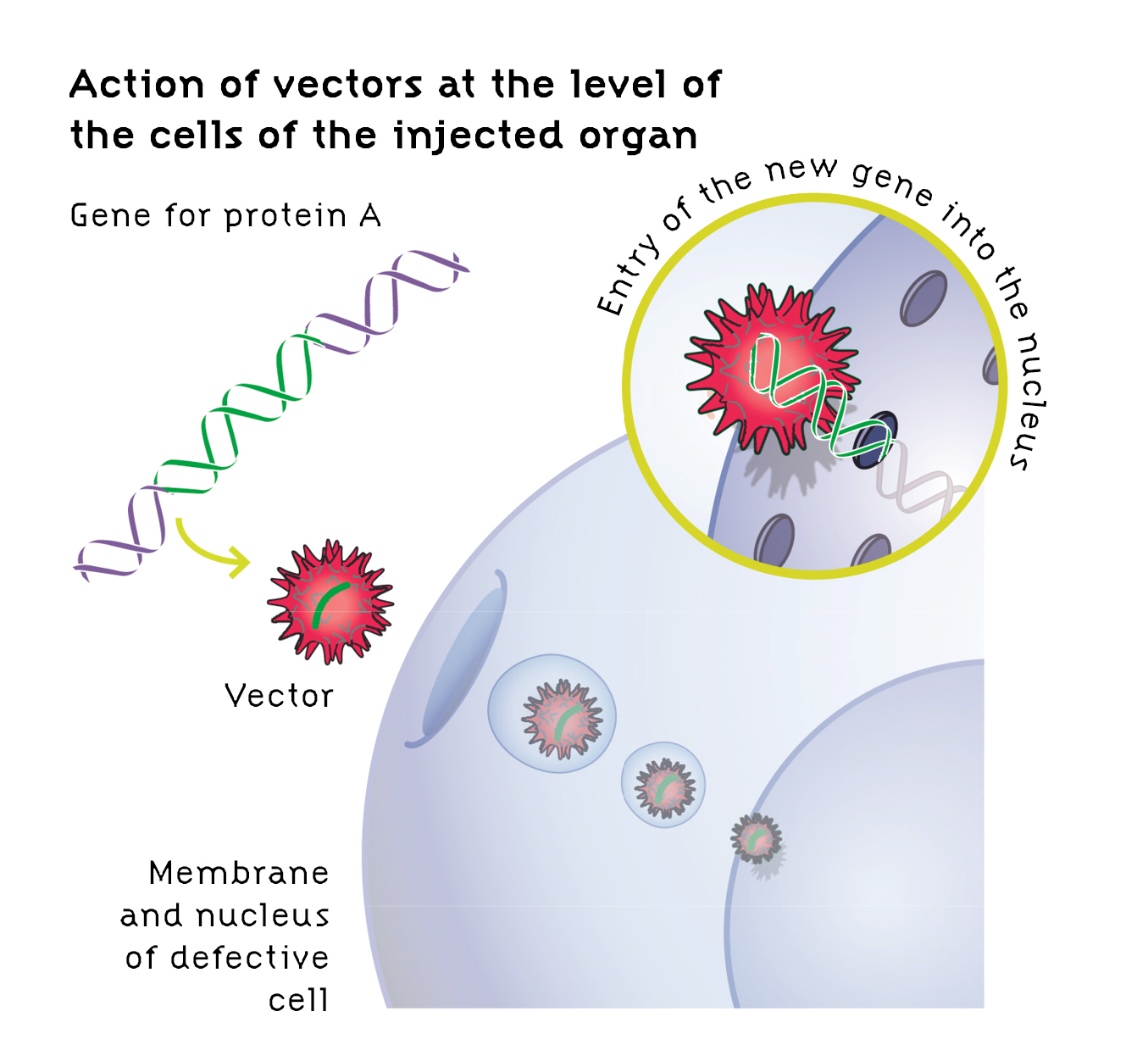In order to transport the gene-drug to the cell, the scientists use a special vehicle, the vector.
Vectors
What can easily penetrate into an organism ? Response: Viruses. Scientists have used nature for an inspiration to develop vectors capable of penetrating a large number of cells and depositing the gene-drug in the interior of these cells.
The majority of vectors have therefore been developed from viruses.
- The scientists construct vectors from genetic elements of these viruses, but only those with no pathogenic properties. They introduce the gene-drug into the vectors which they wish to transfer into the cells of the patient. The viruses most commonly utilized are AAV (adeno-associated viruses) or lentivirus (similar to HIV, which causes AIDS). The production process is complex and it takes time to figure out how to construct a good vector to treat the defective cells.
- Once they are manufactured, the vectors are injected into defective cells using various routes of administration (oral, intravenous, intra-arterial, intramuscular, respiratory, removal of stem cells and re-infusion into the patient after modification). Most of the time the vectors are confronted with our immune defense system which will destroy them. Solutions have been developed to get around these defenses.
Scheme to be translated in coming. We apologize for the inconvenience
- The envelope of the vector must then be recognized by the cell in order to penetrate it. The membrane pinches inward and the vector penetrates the interior of the cell and goes to the nucleus. The gene-drug is finally liberated. The cell can then produce the missing protein and the deficient function is restored: the cell has been treated.


